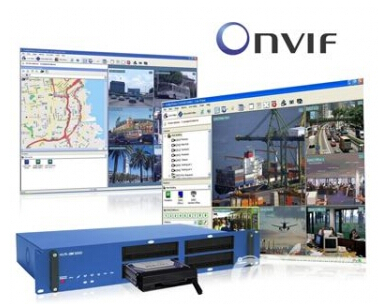Onvif detailed
Onvif detailed
Concept
ONVIF is committed to advancing the use of network video in the security market through a global open interface standard that will ensure interoperability of network video products from different vendors. In November 2008, the Forum officially released the first edition of ONVIF, the ONVIF Core Specification 1.0. With the networked application of video surveillance, the division of labor in the industry chain will become more and more detailed. Some vendors specialize in cameras, some vendors specialize in DVS, and some vendors may specialize in platforms, and then integrate them with integrators to provide them to end customers. This kind of industrial cooperation model has urgently required the industry to provide an increasingly standardized interface platform.
To this end, in May 2008, Axis and Bosch and Sony announced that they will jointly establish an international open network video product standard network interface development forum, named ONVIF (Open Network Video Interface Forum, open network Video Interface Forum), and jointly develop open industry standards based on open and open principles.

The ONVIF standard will define common protocols for information exchange between network video devices, including device discovery, real-time video, audio, metadata, and control information. The wide range of possibilities offered by network video products enables end users, integrators, consultants and manufacturers to easily benefit from cost-effective, flexible solutions, market expansion opportunities and lower risks of.
It is understood that some enterprises and telecom operators have already formulated relevant industry specifications, and some enterprise alliances have proposed some interoperable enterprise standards. ONVIF is globally oriented and the starting point is to develop a completely open standard. The main goal of this standard is to promote integration between different brands of network video equipment, to assist manufacturers, software developers and independent software vendors to ensure product connectivity, which is suitable for the enterprise market.
As you can see from the official website of ONVIF, members have been officially recruited since the end of last year. At the same time, in order to adapt to different levels of participation, ONVIF also offers different levels of membership, you can choose advanced, intermediate or user membership level. The forum has accepted nearly 40 members. Among them, there are 12 senior members. In addition to the three sponsoring companies, Panasonic, Samsung, Cisco, Siemens, TI and other famous brands are among them. The domestic Hikvision, Zhejiang Dahua, Bograng Technology and Jiaxinjie are also among them. Senior member of the ONVIF Forum.
The process of implementing standards is also an important means of purifying the market. It is conducive to integrating security market resources, reducing the amount of repetitive development of labor, and unnecessary human, material and time consumption, and improving product reliability. Greater interoperability and compatibility are conducive to the collective upgrading of the industry, and ultimately bring greater benefits to consumers. It is believed that a unified open standard platform will greatly promote the healthy development of the security monitoring industry.
Normative role
The ONVIF specification describes the models, interfaces, data types, and patterns of data interaction for network video. And reuse some existing standards, such as the WS series of standards
Wait. The goal of the ONVIF specification is to implement a network video framework protocol that enables network video products (including video front ends, video recording devices, etc.) produced by different vendors.
Fully interoperable.

The interfaces defined in the Device Management and Control section of the ONVIF specification are provided in the form of Web Services. The ONVIF specification covers the full definition of XML and WSDL. Each terminal device that supports the ONVIF specification must provide a Web Service corresponding to the function. The data interaction between the server and the client uses the SOAP protocol. Other parts of the ONVIF, such as audio and video streams, are performed via RTP/RTSP.
Normative advantage
Synergy: Products from different vendors can communicate through a unified “language”. Convenient system integration.
Flexibility: End users and integrated users do not need to be tied to the inherent solutions of some devices, significantly reducing development costs.
Quality Assurance: The ever-expanding specifications will be guided by the market, while complying with the norms and meeting the needs of mainstream users.

